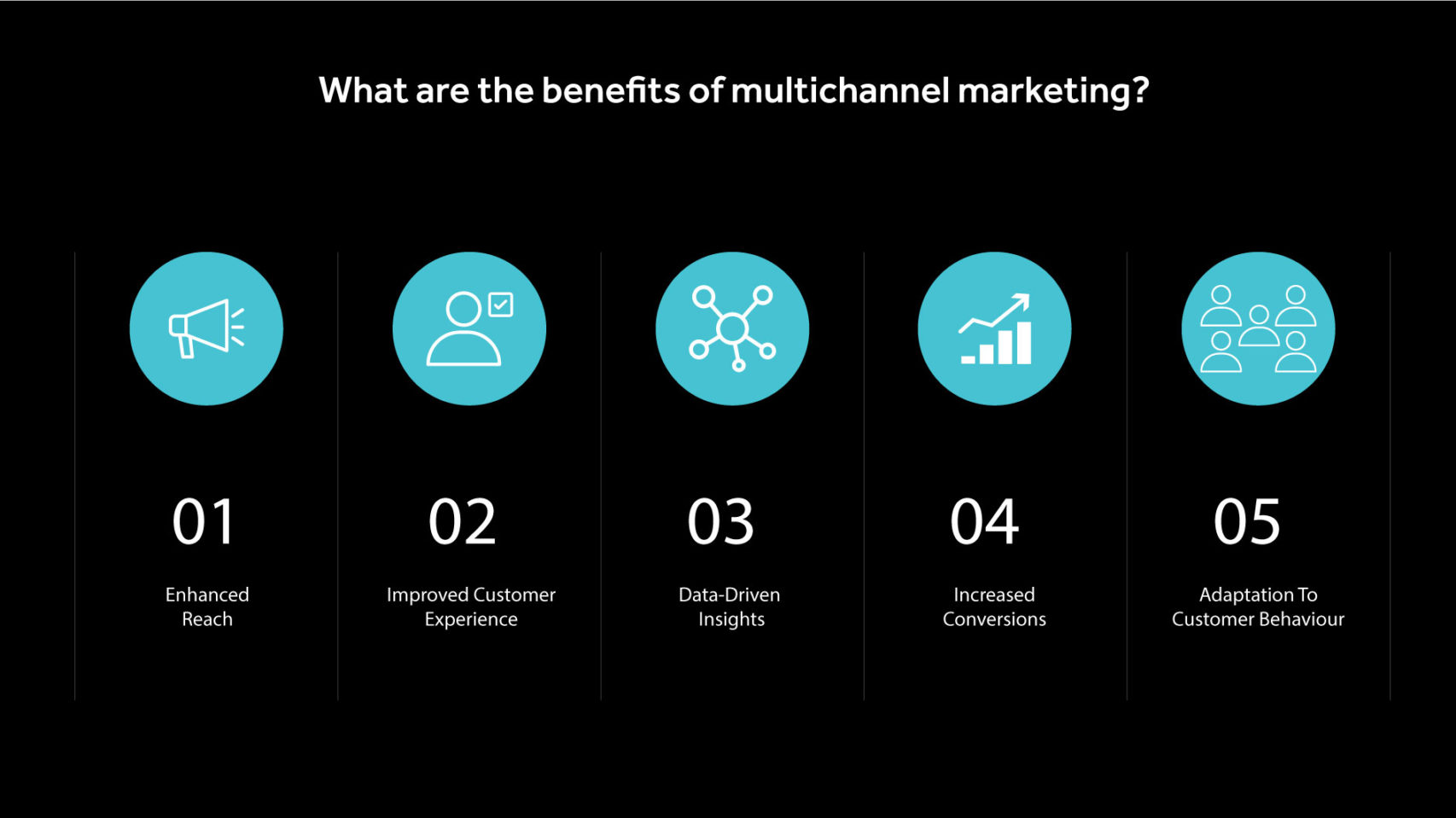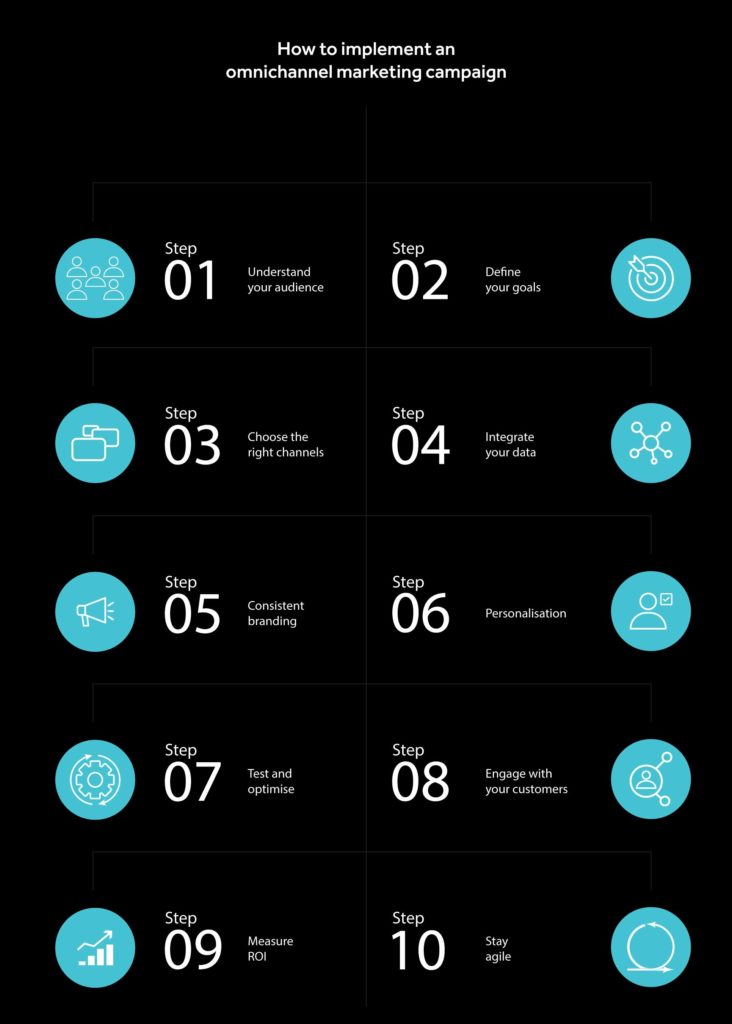What is the best omnichannel marketing definition?
The constantly evolving landscape of digital marketing means that staying ahead of the curve is imperative. One strategy that has gained immense prominence in recent years is omnichannel marketing. This powerful marketing approach has transformed the way businesses connect with their audiences, and understanding its meaning and significance is crucial for success in today’s competitive marketplace. But what is the best omnichannel marketing definition?
What is the difference between omnichannel and multichannel?
To begin looking at the best omnichannel marketing definition, we need to understand the key differences between omnichannel and multichannel marketing. These are two buzzwords you might have heard, but what are they? While they may sound similar, they represent distinct approaches to engaging with customers.
Defining Omnichannel Marketing
Omnichannel marketing is all about providing a seamless and integrated customer experience across various channels. This strategy acknowledges that customers interact with brands through multiple touchpoints, such as websites, social media, mobile apps, email, and physical stores. The key principle of omnichannel marketing is consistency and continuity. It aims to ensure that no matter where a customer engages with your brand, they receive a consistent and personalised experience.
Key Aspects of Omnichannel Marketing
Omnichannel marketing strives to maintain a uniform brand image and messaging across all channels, creating a cohesive brand experience. It leverages customer data to provide tailored content, recommendations, and offers, enhancing customer engagement and satisfaction. Omnichannel allows customers to switch between channels effortlessly without losing the context of their interactions. It’s focused on meeting the customer’s needs and preferences, putting the customer at the centre of the strategy
Defining Multichannel Marketing
On the other hand, multichannel marketing involves a brand’s presence across various channels, but these channels often work independently of each other. In this approach, the emphasis is on casting a wider net to reach a broader audience, rather than creating a seamless and consistent customer experience. Each channel in a multichannel strategy operates somewhat autonomously.
Key Aspects of Multichannel Marketing
Multichannel marketing allows brands to engage with a larger audience by being present on various platforms. Channels may not be well-connected, resulting in a fragmented customer experience. Each channel may have its own marketing strategy and goals, leading to less consistency. The primary focus is often on acquiring new customers rather than retaining existing ones.
Download our Top 3 integrated marketing campaigns: ebook
What are the benefits of multichannel marketing?
Similar to the points we covered in the omnichannel marketing definition section, the benefits of multichannel marketing lie in its ability to meet customers where they are. Consumers have become more discerning, and demand personalised and relevant content. Multichannel marketing enables businesses to deliver the right message, to the right audience, at the right time, increasing the chances of engagement and conversion.
Here are some compelling reasons why multichannel marketing is essential:

Enhanced Reach
By using multiple channels, businesses can cast a wider net and reach a larger and more diverse audience. This helps in increasing brand visibility and attracting potential customers who may not have been reachable through a single channel.
Improved Customer Experience
Customers appreciate consistency. Multichannel marketing ensures that customers receive a consistent brand experience across all channels, leading to higher customer satisfaction and loyalty.
Data-Driven Insights
With data analytics tools, businesses can gather valuable insights into customer behaviour and preferences. This data can be used to refine marketing strategies and tailor content for specific channels.
Increased Conversions
When customers encounter a brand across multiple channels, they are more likely to trust and eventually make a purchase. Multichannel marketing increases conversion rates by nurturing prospects at various stages of the buyer’s journey.
Adaptation to Customer Behaviour
Customers today have the freedom to switch between channels at their convenience. Multichannel marketing allows businesses to adapt to changing consumer behaviour and preferences seamlessly.
How to implement an omnichannel marketing campaign
We looked at the best omnichannel marketing definition, but how and why would you implement one? Here are our 10 steps to get you started with your omnichannel marketing campaigns:

Step 1 – Understand Your Audience
Successful omnichannel marketing begins with a deep understanding of your target audience. You need to take the time to research their preferences, behaviours, and pain points. You can use tools like Google Analytics, social media insights, and customer surveys to gather valuable data.
Step 2 – Define Your Goals
What do you want to achieve with your omnichannel marketing campaign? Be specific about your objectives, whether it’s boosting sales, increasing brand loyalty, or improving customer satisfaction. Your goals will guide your strategy.
Step 3 – Choose the Right Channels
Identify the channels where your audience is most active. This could include your website, social media, email, mobile apps, and even physical stores. Each channel should play a unique role in your overall strategy.
Step 4 – Integrate Your Data
One of the key aspects of omnichannel marketing is data integration. Centralise customer data from all touchpoints to create a 360-degree view of your customers. Customer Relationship Management (CRM) software can be a valuable asset in this process. There are many free options out there to help you get started.
Step 5 – Consistent Branding
Maintain a consistent brand image and messaging across all channels. This ensures that customers receive a uniform experience, whether they’re browsing your website, interacting on social media, or visiting a physical store.
Step 6 – Personalisation
Leverage the customer data you’ve gathered to provide personalised content, recommendations, and offers. Tailoring your messaging to individual preferences increases engagement and conversion rates.
Step 7 – Test and Optimise
Regularly monitor the performance of your campaign. Use A/B testing to refine your strategies and be open to making changes based on what works best for your audience.
Step 8 – Engage with Your Customers
Engagement is key in omnichannel marketing. Encourage customers to interact with your brand by responding to comments, reviews, and messages promptly. This shows that you value their input.
Step 9 – Measure ROI
Track the Return on Investment (ROI) of your omnichannel campaign. Understand which channels are most effective and how your efforts translate into tangible results, such as increased revenue or improved customer retention.
Step 10 – Stay Agile
The digital landscape is always changing, and consumer habits can swing day to day. To implement a successful omnichannel campaign, you need to stay adaptable. Embrace new technologies and strategies as they emerge.
Download our “What is integrated marketing” ebook
Omnichannel marketing challenges
Okay, so we’ve talked about the best omnichannel marketing definition and the benefits – but what are some of the challenges and drawbacks?
Challenge 1 – Data Integration
One of the fundamental challenges in omnichannel marketing is integrating data from various touchpoints. With customer interactions happening on websites, mobile apps, social media, and in-store, consolidating this data into a single view can be challenging and daunting.
Solution: Invest in a robust Customer Relationship Management (CRM) system that centralises customer data. This unified data source ensures you have a comprehensive view of your customers and their interactions. CRM pricing can range widely. Most CRM platforms have a freemium pricing strategy meaning you can try before you buy.
Challenge 2 – Consistency Across Channels
Maintaining a consistent brand image and messaging across all channels is crucial for omnichannel success. Inconsistencies can confuse customers and erode brand trust. It takes time and investment to make sure that your brand, messaging and ethos stay consistent long-term.
Solution: Develop a clear brand style guide that outlines your brand’s voice, visual elements, and messaging. Regularly review and update this guide to ensure consistency across all channels. Using an agency that has experience in this area will help you create a robust strategy. Get in touch with us if you would like a free consultation.
Challenge 3 – Customer Privacy and Data Security
With the increasing emphasis on data protection, navigating the waters of customer privacy and data security in omnichannel marketing can be a challenge. On top of this, many countries have different data laws, that you will have to abide by if you plan on running campaigns in that country.
Solution: Ensure compliance with data protection regulations (such as GDPR or CCPA) and implement robust data security measures. Be transparent with customers about how their data is used, building trust in the process. If you are unsure of the laws surrounding data laws, we suggest using a professional to help you navigate these complex policies.
Challenge 4 – Resource Allocation
Managing multiple channels can strain your resources, including time, budget, and manpower. Without proper resource allocation, your marketing efforts may be less effective.
Solution: Prioritise channels based on audience and ROI. Focus your resources on the most critical channels to maximise results and gradually expand as resources allow.
Challenge 5 – Employee Training
Implementing an omnichannel strategy requires your team to have the right skills and knowledge to manage various platforms effectively. Many campaigns fail because the people managing the process are not skilled enough to juggle the many different channels.
Solution: Invest in ongoing training and development programs for your team. Ensure they are well-versed in the tools and technologies necessary for omnichannel success.
Challenge 6 – Measuring and Analysing Performance
Tracking and measuring the success of an omnichannel campaign can be complicated, especially when multiple touchpoints are involved. Large amounts of data are created and processing that data in a way that not only makes sense but tells a story, can be a tricky skill to foster.
Solution: Implement analytics tools and establish Key Performance Indicators (KPIs) for each channel. Regularly review these metrics to assess the effectiveness of your strategy and make data-driven adjustments. If budget allows, invest in a data visualising software that allows you to paint a visual picture of the progress of your campaign.
Challenge 7 – Adapting to Evolving Technology
We don’t need to tell anyone that technology is advancing at an ever-increasing rate. New technologies and platforms are constantly emerging and with the advancements of AI this will only continue to accelerate. Staying up-to-date and adaptable is crucial for omnichannel success.
Solution: Keep an eye on industry trends and invest in technology that aligns with your omnichannel goals. Adaptability is a cornerstone of successful omnichannel marketing.
Looking to create an omnichannel marketing strategy?
We hope that we have been able to give you a clear understanding of an omnichannel marketing definition. We have helped countless clients set up and implement award winning omnichannel marketing campaigns, so, if you want your marketing campaign to be in safe hands – get in touch with us to see how we can help you smash your targets.

